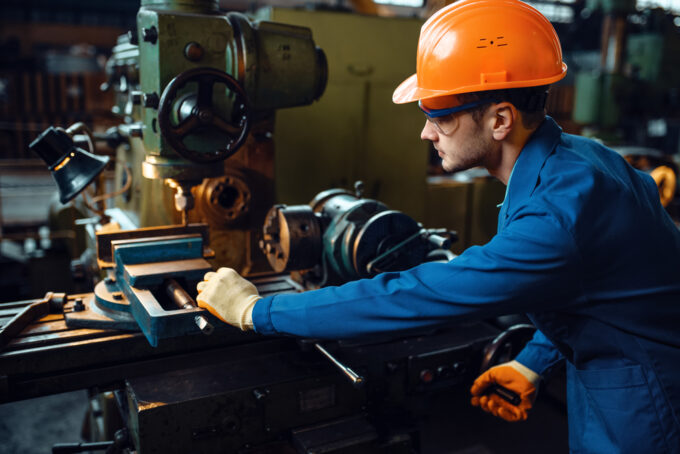New EU Machinery Regulation
In order to meet the state of the art and all stakeholders, the Machinery Directive 2006/42/EC will be replaced by the new EU Machinery Regulation. Its publication in the European Official Journal is scheduled for the beginning of July 2023. What does this mean for the companies affected?

Since 1989, a Machinery Directive, which has been revised several times, has promoted the free movement of machinery in the internal market and ensured a high level of protection for workers and citizens in the European Union. In 2018, however, various areas were identified where action is needed and a revision is required. For example, increasing digitalization and networking are leading to new safety risks that are not or insufficiently taken into account by the previous Machinery Directive.
When does the EU Machinery Regulation come into force?
In mid-April 2023, the EU Parliament adopted the new Machinery Regulation with a large majority. It replaces the Machinery Directive 2006/42/EC of May 17, 2006. The entry into force of the Machinery Regulation will be determined by publication in the Official Journal of the EU. The publication is expected to take place at the beginning of July 2023. Around twenty days later, the regulation will enter into force. This will be followed by a transition period of 42 months, during which manufacturers will have time to implement the new requirements.
What changes?
By means of more stringent definitions and harmonization of the areas of application and conformity assessment procedures, the Machinery Regulation is intended to provide greater clarity. The structure of the list of machines and products in Annex I of the Commission proposal has been changed. The list of high-risk machinery has been adapted and conformity assessment by independent third parties is now to be mandatory for this machinery. For most products, however, the possibility of self-assessment of conformity remains.
The European Commission will have the possibility to update the list of products considered as potentially risky by delegated acts. This ensures a balance between guaranteeing a high level of safety and the intention not to place a disproportionate burden on industry. In addition, the Commission and the Council have also adapted the content of the technical documentation and added to the list of safety components. It should become possible for companies to issue paperless documents such as a digital operating manual and digital declaration of conformity in order to reduce monetary and environmental costs.
Aligned with the legal framework for technical legislation "New Legislative Framework" (NLF, No. 768/2008/EC), in addition to the manufacturer, the importer and the distributor must also comply with certain obligations which, according to the Commission, are proportionate to the responsibilities of the economic operators. Furthermore, in the case of substantial modification of a machine according to the definition, the person who modifies the machine becomes the manufacturer and must comply with the corresponding obligations. As the complexity of the machinery supply chain increases, there is a general obligation for the participation of third parties involved in the machinery supply chain who are not economic operators.
Which product areas are affected?
The Machinery Regulation covers the entire machinery, electrical and metal industry. It applies to all machinery products that are new to the Union market when they are placed on the market and thus also to machinery products from third countries. The directive distinguishes between machinery, related products (interchangeable equipment, safety components, chains, ropes, belts, lifting accessories, removable mechanical transmission devices, etc.) and partly completed machinery. However, all are covered by the new regulation.
Weapons (regulated by EU Directive 2017/853), household appliances (regulated by EU Directive 2014/35/EU) and equipment with a telecommunications function (regulated by EU Directive 2014/53/EU) are excluded from the directive. The new Machinery Regulation is aimed at risks arising from the function of the machinery and not from the transport of goods or persons. Thus, it does not actually cover vehicles whose sole purpose is to carry goods or people in traffic. However, machines that are on vehicles, such as forklifts, are included in the regulation. The Council text also does not exclude small private vehicles or light electric vehicles such as electric scooters and electric bicycles, as they are widely used and could potentially pose a danger to users. In case of doubt, it is worth checking carefully whether your own products are affected by the new regulation.
Source: SNV message
What does this mean for Swiss exporters?
For most products, Swiss manufacturers will still be able to carry out the conformity assessment procedure prescribed by the EU themselves, as before, according to the Swissmem association. For products for which third-party certification is required under the Machinery Ordinance, this must be carried out by a notified body based in the EU and recognized by the EU. According to Swissmem, this mainly concerns equipment that has a certain hazard potential. Less than ten percent of Swissmem member companies are likely to be affected by this, the association said.
According to the new Machinery Ordinance and the Market Surveillance Ordinance, manufacturers from Switzerland will need a so-called economic operator established in the EU from 2027, as Swissmem points out. This could be either a person appointed by the manufacturer, the importer or the distributor. This person would also have to be indicated on the product, which would lead to a considerable additional effort for mass products.
According to Swissmem, these regulations will make market access more difficult for Swiss manufacturers. Exporting to the EU will become significantly more onerous and thus more expensive for the companies concerned. Only an update of the agreement between Switzerland and the EU on mutual recognition of conformity assessments (MRA) could prevent this and secure the status quo. However, an agreement between Switzerland and the EU on the open institutional questions is likely to be a prerequisite for this, the association writes further. However, such an agreement is currently not within reach.On Wednesday, July 5 (1:30 p.m. to 3 p.m.), Swissmem will conduct one webinar through: It is intended as an introduction to the new EU Machinery Regulation and should enable companies to assess their own need for action.









